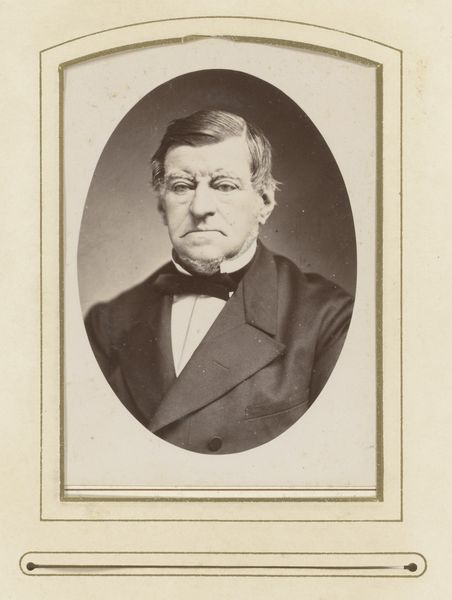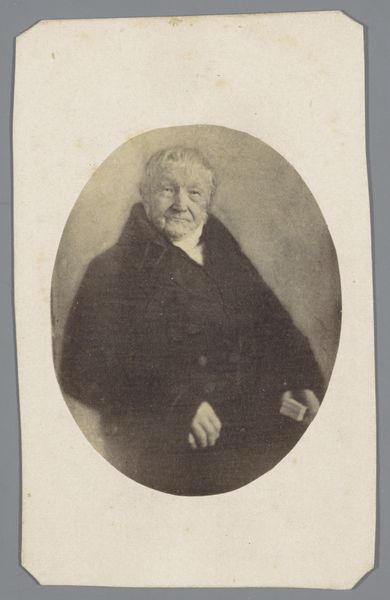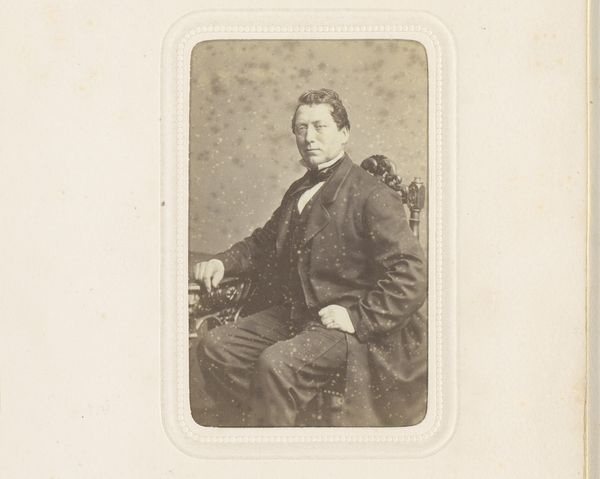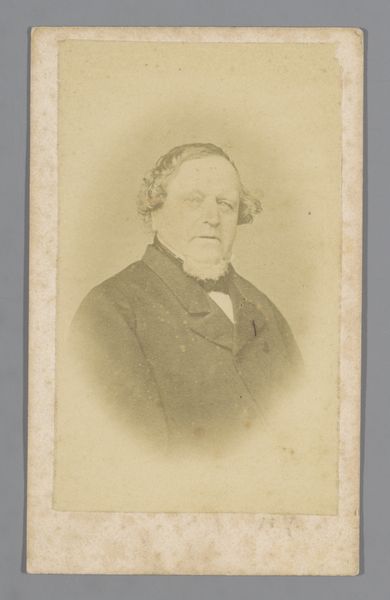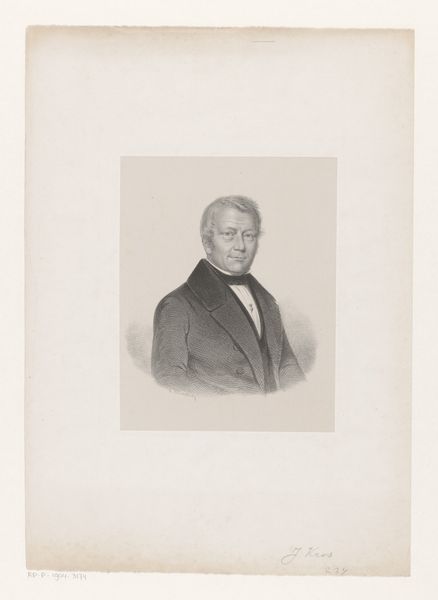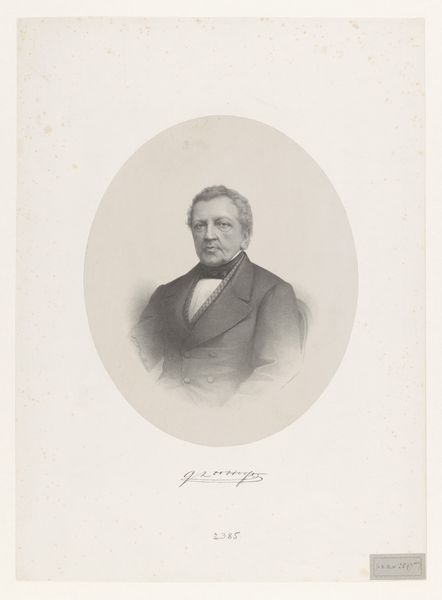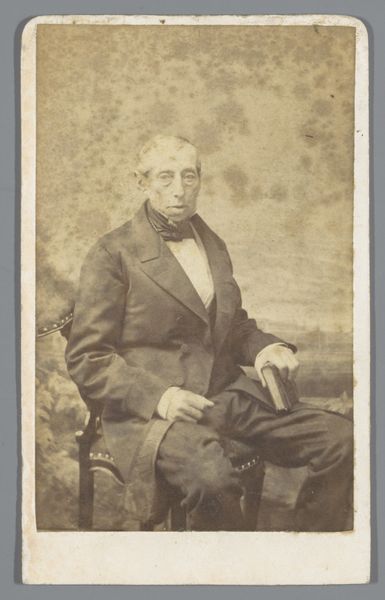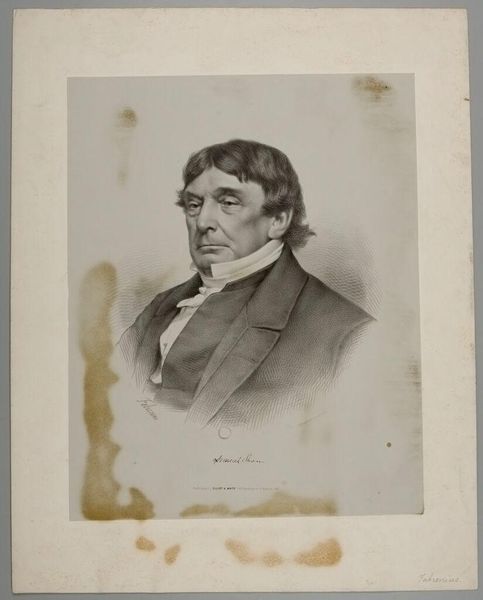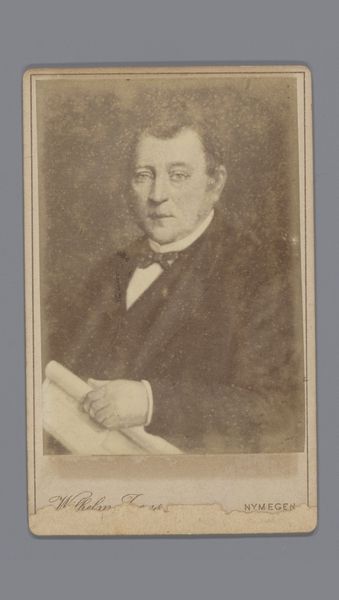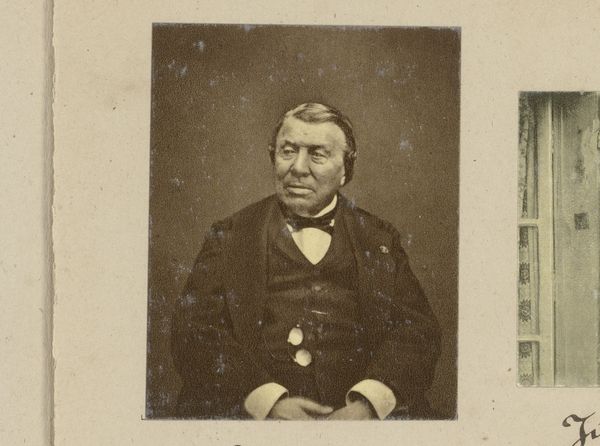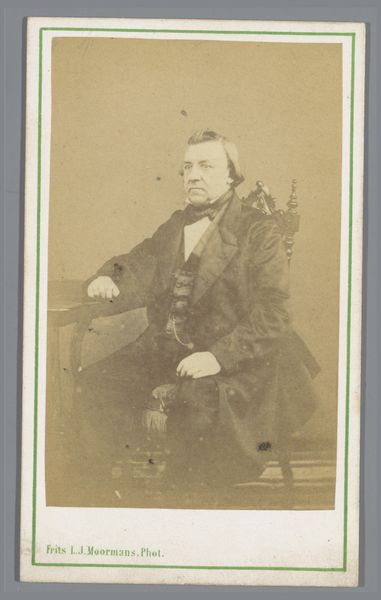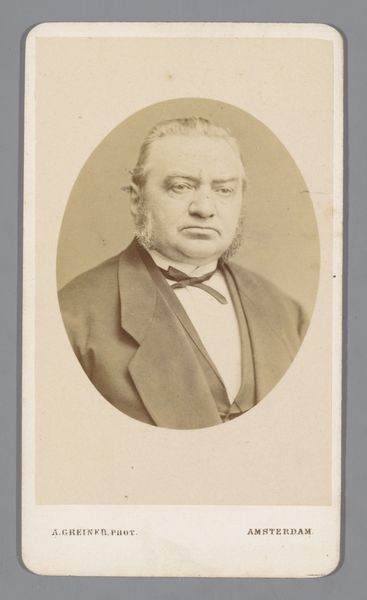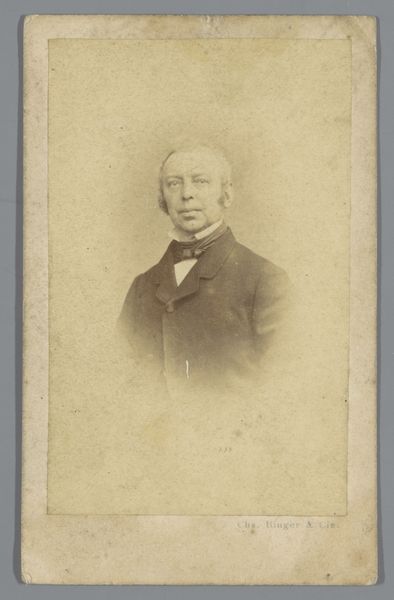
photography, gelatin-silver-print
#
portrait
#
photography
#
gelatin-silver-print
#
realism
Dimensions: height 103 mm, width 67 mm
Copyright: Rijks Museum: Open Domain
Editor: Here we have a gelatin silver print, a portrait of an unknown man, dating somewhere between 1859 and 1873, attributed to Joseph Dupont. What strikes me is the sitter's unwavering gaze, almost confrontational. What do you make of this work, focusing on its formal elements? Curator: Indeed, let's consider the composition. Note the oval frame within the rectangular card. This immediately creates a contained space, focusing our attention on the subject. What is the effect of that frame, do you think? Editor: It feels like he is being observed, almost pinned, as in an entomological study. The curve is softened by the dark tones and the straight edges. It makes for a somewhat serious yet softer image overall. Curator: Precisely. Now observe the tonal range, from the stark white of his shirt to the deep blacks of his coat. This dramatic contrast shapes the figure. The soft, almost diffused light across his face emphasizes the texture of the skin. Notice also the balance – or perhaps the slight imbalance – in the placement of the head within the oval. Is he truly centered? What are your thoughts about the lines that define the composition? Editor: I can see the soft curvature contrasting to the strong straight edges. Although at first look it feels that everything is symmetrically aligned, I can tell he is slightly positioned on the right. I had to make an effort to analyze them separately. Curator: Precisely. That tension, between symmetry and asymmetry, creates a visual dynamism. This play between light and dark, line and curve, engages the viewer in a prolonged act of seeing. Formally speaking, Dupont masterfully employed photographic techniques to deliver a realistic depiction that transcends mere documentation. I appreciate that your attention to the details contributes to our understanding of the photo's strengths. Editor: Thank you, seeing it this way really helps me see the overall meaning of its composition and form, not just the representation of the subject.
Comments
No comments
Be the first to comment and join the conversation on the ultimate creative platform.

